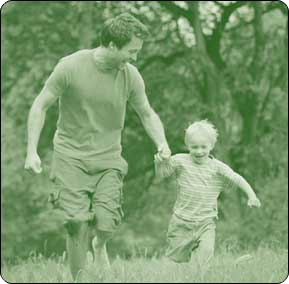Green BuildingButler is Building Green.
The green movement encourages developers, architects, and builders to
reduce the environmental impact and increase the energy efficiency of
building projects. Building to these standards is known as "building
green." 
Building green involves implementing a loosely defined collection
of land use strategies, building design, and construction strategies
that are designed to protect the environment, reduce energy consumption,
and promote occupant health.
Definition of Green Design
Design and construction practices that significantly reduce or
eliminate the negative impact of buildings on the environment and
occupants are called "green design." Often called "sustainable design,"
these practices cover seven categories.
The goal of green design is to encourage construction of
high-performance buildings that improve our local and global
communities.
U.S. Green Building Council
 A coalition of leaders from across the building industry formed the
U.S. Green Building Council. The Council's goal is to promote buildings
that are environmentally responsible, profitable, and healthy places to
work. For a wealth of information about the green building movement,
visit the USGBC website at www.usgbc.org. Butler is an active member of the USGBC. A coalition of leaders from across the building industry formed the
U.S. Green Building Council. The Council's goal is to promote buildings
that are environmentally responsible, profitable, and healthy places to
work. For a wealth of information about the green building movement,
visit the USGBC website at www.usgbc.org. Butler is an active member of the USGBC.
For more information on building green, visit these additional web sites:
Butler Products as Green Building Products.
The following points explain how Butler® products contribute to green building:
- Products That Reduce Material Use--Through extensive testing
and computer modeling, all Butler projects are optimized to minimize
the amount of steel used to meet exact design specifications. This
compares favorably to other steel or wood structures that use and often
underutilize predefined shapes or sections. The lighter-weight structure
also reduces the size of footings and foundations, reducing the
concrete and steel used. Minimizing the steel and concrete used in a
building conserves our natural resources and reduces costs.
- Salvaged/Recycled Products--Steel used to make the building
structural and covering components is made from recycled scrap generated
both from consumer and industrial users. On a weighted average,
recycled steel accounts for roughly half of the steel used in a typical
building.
- Reusable or Recyclable Materials--Butler® metal buildings
can be disassembled, relocated and reused, making them adaptable to
different end uses and extending their usable life. Steel from buildings
can also be 100 percent recycled reducing the energy used to produce
new steel products.
- Life-cycle--Almost all Butler products carry a 25-year
warranty on roof and wall panels and require minimal maintenance to last
much longer. Steel is naturally termite and rodent resistant and
requires no pesticides or treatment for protection. And properly
protected primary and secondary framing members can last indefinitely.
- Paint Finishes--Butler uses only structural finishes that
meet or exceed current EPA regulations and also uses low-VOC paints,
caulks, and adhesives. Metal building products do not release pollutants
like certain wood products or built-up roof products.
- Regional Shipping--Butler's six regional fabrication plants
assure that production is close to most building sites, reducing
transportation energy costs.
- Energy Efficient--Butler offers a wide variety of insulation
systems and an insulation thermal spacer block that significantly
improves the in-place performance of the roof insulation. To assure
performance, Butler conducted tests in lieu of using empirical formulas.
We offer insulation systems that can achieve R-40 or more when
required.
- Heat-Island Effect--Butler uses cool metal roofs
(cool roofs)
to reduce the heat-island effect, minimizing the impact buildings have
on the microclimate and human and wildlife habitat. Reducing the
external temperature of buildings reduces smog formation, improving air
quality.
If you have questions regarding building green with Cirrus, click here to contact us or call 336.627.7700.
|






